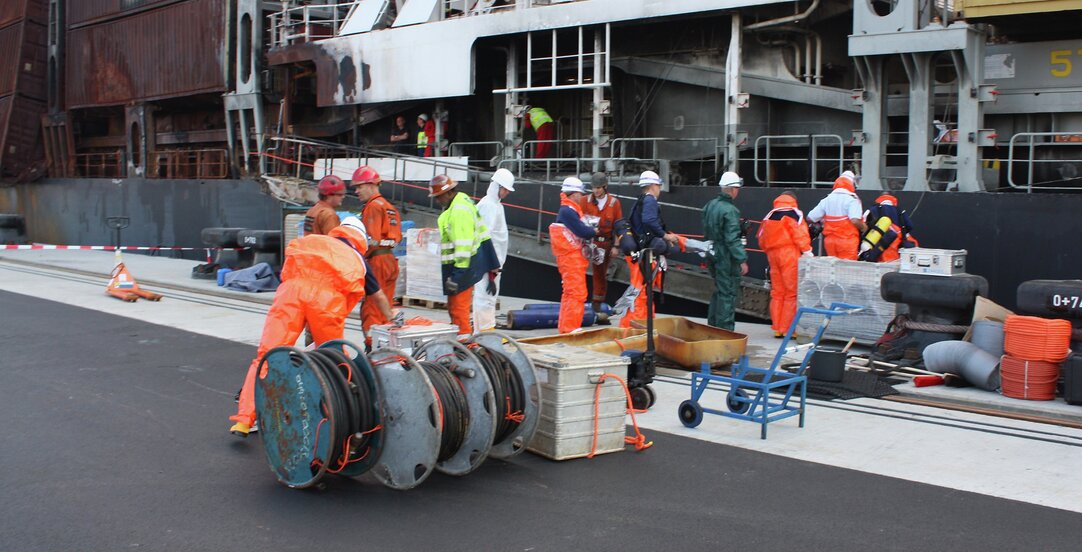Limitation of liability in light of the MSC Flaminia (No.2) case

The right to limit liability for claims is a cornerstone and unique feature of maritime law. Limitation issues are a particularly important consideration in the aftermath of large scale casualties as the ability to limit liability may significantly reduce the financial exposure for a party and its insurers.
Reading time 5 minutes
The recent decision from the English High Court in MSC Flaminia (No.2), provides useful guidance on which claims are and which are not capable of being subject to limitation.
Facts
In MSC Flaminia (No.2) ([2022] EWHC 2746 (Admlty)), Conti (“Owners”) had chartered the 6750 TEU container ship “MSC Flaminia” (“Vessel”) to MSC (“Charterers”) on a long-term time charterparty (“Charterparty”).
In July 2012, three tank containers laden with the chemical divinylbenzene (“DVB”) were loaded onboard the Vessel in the United States for carriage to Europe. Unfortunately, between 1 and 14 July 2012, the DVB underwent “auto-polymerisation”, which is a process involving many small unsaturated monomers combining to form one large polymer. This did not only impair the quality and value of the DVB, but also caused a build-up of heat and pressure inside the containers carrying it. On 14 July 2012, when the Vessel was in the middle of the Atlantic Ocean, some of the DVB escaped from the containers and formed an aerosol which ignited. This led to an explosion and a large fire in the Vessel’s cargo hold. Overall, the Vessel and its cargo were extensively damaged and a large scale response to the casualty was required. Tragically, three members of the crew lost their lives in the initial explosion.
Cargo claims were commenced in the United States but the claims between Owners and Charterers were subject to London arbitration as per the terms of the Charterparty. Pursuant to awards of the London tribunal, Charterers were held liable to Owners in respect of the casualty and were ordered to pay damages of around US$ 200 million.
Charterers therefore commenced a limitation claim in the Admiralty Division of the English High Court to limit their liability under the 1976 Convention on Limitation of Liability for Maritime Claims (“LLMC”) (as amended by the Amending Protocol of 1996). If the limitation claim had been successful, Charterers would have been able to limit their liability to around £28 million, based on the tonnage of the Vessel.
The Law
Under the LLMC (which is given enacted under English Law by the Merchant Shipping Act 1976), a “shipowner” (which for the purpose of the convention includes a charterer) can limit its liability for claims listed in Article 2.1 of the convention. The most common limitable claims are:
“(a) claims in respect … loss of or damage to property … occurring on board or in direct connection with the operation of the ship or with salvage operations, and consequential loss resulting therefrom”
However, in the CMA Djakarta case ([2004] EWCA Civ 114), which also concerned a large container ship fire, the English Court of Appeal held that Article 2.1(a) covers only claims in respect of loss of or damage to property other than the ship itself.
In light of that decision, Charterers of the Flaminia attempted to limit their liability to Owners under Article 2.1(a) of the LLMC on the basis that the damage to the ship was a “consequential loss” resulting from “loss of or damage to property” (the DVB) for the purpose of Article 2.1(a).
The Court’s Decision
Ultimately, the English High Court held that Owners’ claim against Charterers was a claim for damage to the ship and consequential losses arising from that damage. Owners’ claim was not a claim for loss of or damage to property (other than the ship itself) or consequential losses resulting from the same. Under the LLMC 1976, and as per the CMA Djakarta, Owners’ claim was therefore not one which Charterers could limit their liability for.
The Admiralty Judge, Mr Justice Andrew Baker, considered that for Charterers to succeed they would need to show that the CMA Djakarta was wrongly decided and that was not an argument available to it in the High Court. However, even if it was possible to consider that argument, he would reject it for the following reason:
The Admiralty Judge considered that Article 2 of the LLMC 1976 was concerned with “claims categorisation” and not with the more complex matter of factual causation. During the hearing, the Charterers accepted that if cargo is damaged or lost because of damage to the ship, a claim by that cargo owner is not a claim in respect of “damage to the ship”. Accordingly, by the same logic, if the ship is damaged or lost because of damage to the cargo, a claim by the shipowner is not a claim in respect of “damage to cargo”. In other words, as per the Admiralty Judge:
“The causal contribution of cargo damage in the damage to the ship does not turn a claim for damaging the ship into a cargo claim”
In setting out his decision, the Admiralty Judge also gave helpful guidance on the meaning of “consequential loss” in Article 2.1(a), and whether a charterer can ever limit its liability to an owner under Article 2.1 or vice versa.
With respect to the meaning of “consequential loss”, the Admiralty Judge opined that “consequential loss” is not limited to losses caused to the owner of the property but is instead wider and covers losses suffered by a party other than the owner (or party entitled to possession) of the property lost or damaged.
As for whether an owner or charterer can ever limit its liability to the other under Article 2.1, the Admiralty Judge held that they can, although they would need to own property onboard the vessel other than the vessel itself. In this respect, the Admiralty Judge provided examples such as a charterer’s ownership of cargo onboard, an owner owning some of the containers being carried, or either party owning the vessel’s bunkers.
Comment
Despite the importance that limitation issues play in the aftermath of a large casualty, decisions relating to limitation of liability are rare. Indeed, as noted by the Admiralty Judge, this was the first judgment since the early 2000s in which an English court has had to consider a claim by a charterer that it is entitled to limit its liability to an owner under the LLMC for anything other than cargo claims.
Ultimately, this decision should provide comfort to owners and insurers of vessels that are involved in large and destructive casualties. In such casualties, the owners’ losses will often far exceed the limit of liability. The decision in MSC Flaminia (No.2) means that, if a breach of the relevant charterparty can be established and damages are awarded arising from loss of or damage to their vessels, owners and their insurers can be more confident of making a substantial recovery without having to defend limitation actions.


